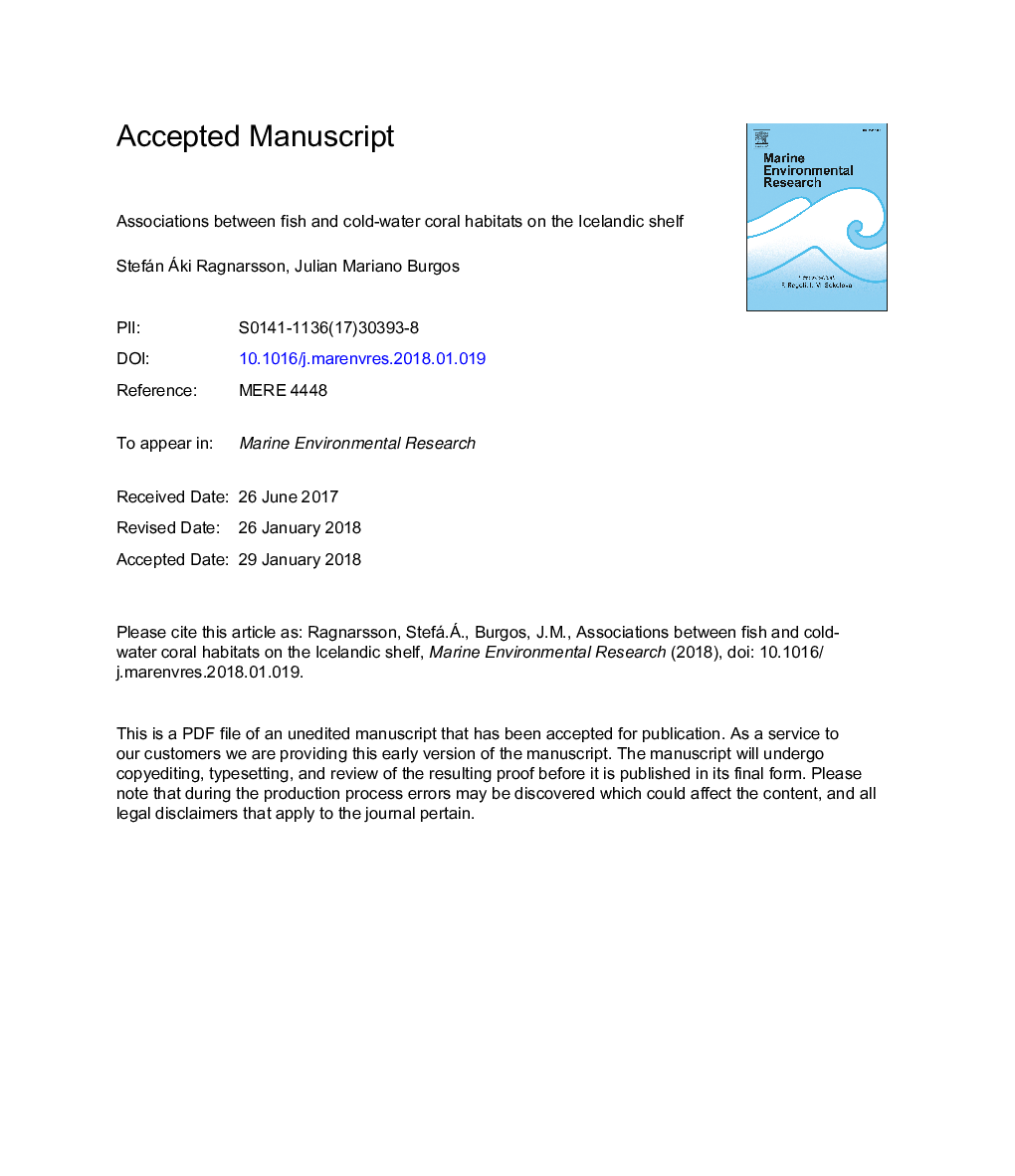| Article ID | Journal | Published Year | Pages | File Type |
|---|---|---|---|---|
| 8886323 | Marine Environmental Research | 2018 | 21 Pages |
Abstract
The association between fish assemblages and cold-water coral habitats was evaluated based on analysis of longline catches in the Lónsdjúp trough, SE-Iceland. In 2009 and 2010, longlines were set in locations with varying coral cover within the trough. The study site is characterised by a depression (50-100â¯m deep), intersected by several ridges. Colonies of the cold-water coral Lophelia pertusa and other coral species were mainly found on the ridges. Among the fifteen fish species recorded, tusk (Brosme brosme) contributed â¼80% to the total fish abundance in both surveys and their catch per unit effort was twofold greater on the ridges than in adjacent flat areas. Multivariate analyses showed differences between the structure of fish communities on and off the ridges. Constrained redundancy ordinations followed by variance partitioning revealed that the structure of the fish community varied with seabed complexity, cold-water coral coverage and geographical position. It was not possible to separate between the effects of seabed complexity and coral cover, as these were strongly correlated.
Related Topics
Physical Sciences and Engineering
Earth and Planetary Sciences
Oceanography
Authors
Stefán Áki Ragnarsson, Julian Mariano Burgos,
